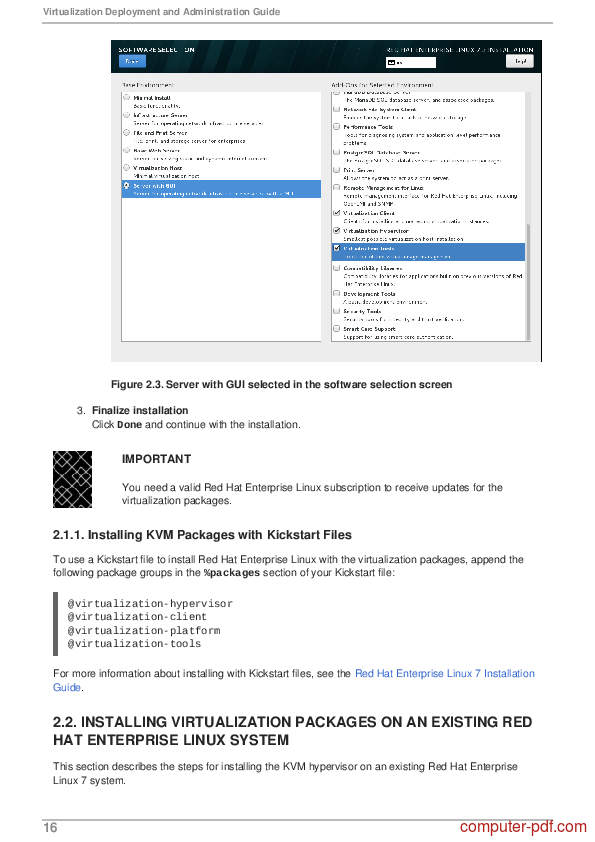
- #RED HAT LINUX VIRTUAL MACHINE DOWNLOAD FREE HOW TO#
- #RED HAT LINUX VIRTUAL MACHINE DOWNLOAD FREE ISO#
#RED HAT LINUX VIRTUAL MACHINE DOWNLOAD FREE HOW TO#
How to install Ubuntu Linux using Hyper-V on Windows 10
#RED HAT LINUX VIRTUAL MACHINE DOWNLOAD FREE ISO#
Select the path for the ISO file with the Ubuntu installation files.On Installation options, select the Install an operating system from a bootable CD/DVD-ROM option.You can leave all the default settings to create a virtual hard drive, but under Size make sure to allocated at least 25GB of storage, which is the minimum required to run Ubuntu.Use the drop-down menu to select the virtual switch you created earlier.You can allocate as much memory as you want, but this setting will always depend on the physical memory available on your computer. In the case of Ubuntu, you need a minimum of 2GB of memory. Select the amount of RAM to allocate for your virtual machine. Or you can select Generation 2 if you want a UEFI-based firmware. You can leave the default Generation 1 option selected.Use the default location to store your virtual machine, or check the Store the virtual machine in a different location option to select a different path.Under connection type, make sure your network adapter is select on External network.Īfter creating the virtual switch, you can proceed to create a new virtual machine:Įnter a descriptive name for your virtual machine (e.g., vm-ubuntu).Enter a new descriptive name for the switch (e.g., MyVirtualSwitch).

On the left pane, select New virtual network switch.Select New and click on Virtual Switch Manager. Search for Hyper-V Manager and click the top result.Use the following steps to configure a virtual switch on Hyper-V: However, before you do that, you must create a virtual switch to allow the VM to connect to the internet. Once you've completed adding the virtualization layer to Windows 10, you'll need to create a virtual machine for the Linux distribution you want to use. How to create a virtual machine using Hyper-V Check the Hyper-V option making sure: Hyper-V Management Tools and Hyper-V Platform are also selected.Īfter the installation completes, click Restart now to apply the changes.Use the following steps to enable Hyper-V on Windows 10:Ĭlick on Turn Windows features on or off. If the command displays No under Hyper-V Requirements, then your hardware doesn't support this feature, or you need to make sure to enable it manually. Under Hyper-V Requirements, if the result reads Yes, then you can run Hyper-V. Type the following command and press Enter: Search for Command Prompt and click the top result.You can quickly verify your computer has the required support for Hyper-V using Systeminfo: In addition, you have to make sure the Virtualization Technology and Hardware Enforced Data Execution Prevention options are enabled on your system BIOS. Processor must support VM Monitor Mode Extension (VT-c on Intel chips).64-bit CPU with Second Level Address Translation (SLAT).

Verifying Hyper-V supportĪlthough Hyper-V is part of Windows 10, there is a minimum hardware requirement a computer must meet to enable the feature.

Hyper-V is a virtualization technology from Microsoft available on Windows 10 Pro, Enterprise, and Education, and it allows you to create one or multiple virtual machines to install and run different OSes on the same physical hardware. However, it's possible to install version 16.04, which might be a more stable version of the open source project, and you can also install other distros, including: In this guide, we'll be using Ubuntu version 17.10, which you can download from the official Ubuntu website.


 0 kommentar(er)
0 kommentar(er)
